Hyundai i30 Wagon vs Skoda Superb Combi – Differences & prices compared
Everyday use, family trips or long-distance drives – here’s where the differences show.
Discover whether Hyundai i30 Wagon or Skoda Superb Combi fits your lifestyle better.
Costs and Efficiency:
Price and efficiency are often the first things buyers look at. Here it becomes clear which model has the long-term edge – whether at the pump, the plug, or in purchase price.
Hyundai i30 Wagon has a clearly advantage in terms of price – it starts at 24800 £, while the Skoda Superb Combi costs 35200 £. That’s a price difference of around 10380 £.
Fuel consumption also shows a difference: Skoda Superb Combi manages with 0.40 L and is therefore significantly more efficient than the Hyundai i30 Wagon with 5.70 L. The difference is about 5.30 L per 100 km.
Engine and Performance:
Power, torque and acceleration are the classic benchmarks for car enthusiasts – and here, some clear differences start to show.
When it comes to engine power, the Skoda Superb Combi has a decisively edge – offering 265 HP compared to 140 HP. That’s roughly 125 HP more horsepower.
In acceleration from 0 to 100 km/h, the Skoda Superb Combi is convincingly quicker – completing the sprint in 5.70 s, while the Hyundai i30 Wagon takes 9.80 s. That’s about 4.10 s faster.
In terms of top speed, the Skoda Superb Combi performs evident better – reaching 250 km/h, while the Hyundai i30 Wagon tops out at 197 km/h. The difference is around 53 km/h.
There’s also a difference in torque: Skoda Superb Combi pulls noticeable stronger with 400 Nm compared to 253 Nm. That’s about 147 Nm difference.
Space and Everyday Use:
Cabin size, boot volume and payload all play a role in everyday practicality. Here, comfort and flexibility make the difference.
Both vehicles offer seating for 5 people.
In curb weight, Hyundai i30 Wagon is somewhat lighter – 1316 kg compared to 1575 kg. The difference is around 259 kg.
In terms of boot space, the Skoda Superb Combi offers a bit more room – 690 L compared to 602 L. That’s a difference of about 88 L.
In maximum load capacity, the Skoda Superb Combi performs slightly better – up to 1920 L, which is about 270 L more than the Hyundai i30 Wagon.
When it comes to payload, Skoda Superb Combi a bit takes the win – 584 kg compared to 524 kg. That’s a difference of about 60 kg.
Who wins the race?
The Skoda Superb Combi proves to be leaves the rival little chance and therefore becomes our DriveDuel Champion!
Skoda Superb Combi is the better all-rounder in this comparison.

Skoda Superb Combi
Hyundai i30 Wagon
The Hyundai i30 Wagon offers a blend of practicality and style, making it a popular choice for families and those in need of extra space. Its sleek exterior and comfortable interior provide a pleasant driving experience, while advanced safety features ensure peace of mind on the road. The i30 Wagon stands out with its impressive fuel efficiency and reliability, catering to both urban and rural lifestyles.
details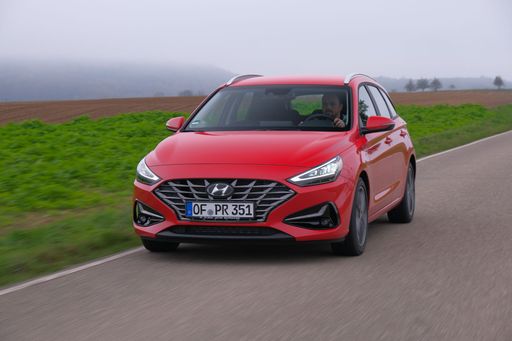 @ hyundai.news
@ hyundai.news
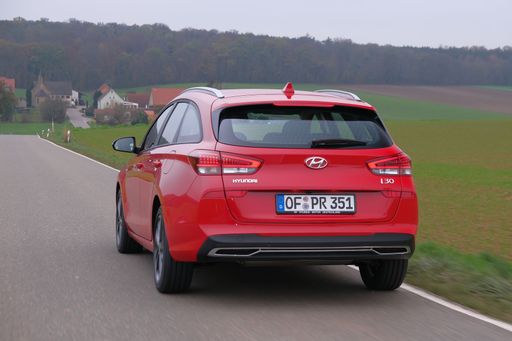 @ hyundai.news
@ hyundai.news
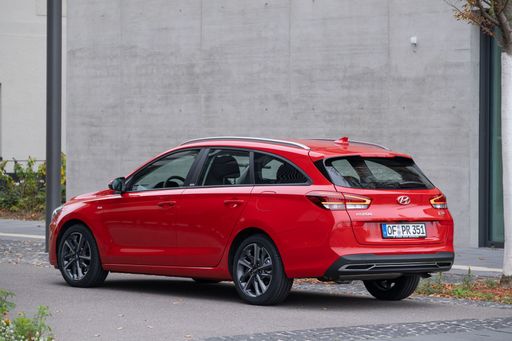 @ hyundai.news
@ hyundai.news
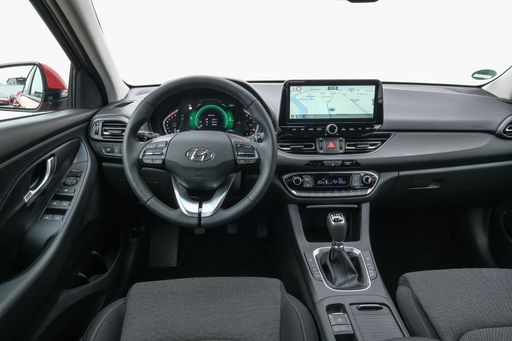 @ hyundai.news
@ hyundai.news
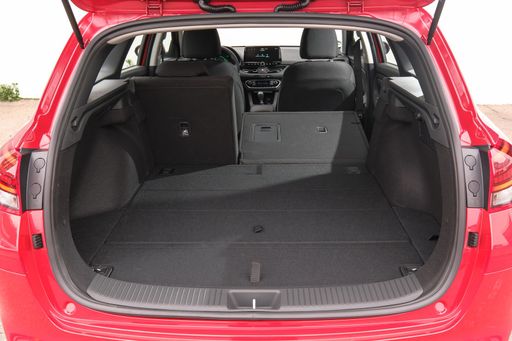 @ hyundai.news
@ hyundai.news
Skoda Superb Combi
The Škoda Superb Combi combines practicality and elegance, making it a popular choice for families and professionals alike. Its spacious interior offers exceptional comfort and ample storage, suitable for long journeys and everyday errands. Additionally, the refined design and advanced technology features ensure a sophisticated driving experience.
details @ Skoda Presse Deutschland
@ Skoda Presse Deutschland
 @ Skoda Presse Deutschland
@ Skoda Presse Deutschland

|

|
|
|
|
Costs and Consumption |
|
|---|---|
|
Price
24800 - 30100 £
|
Price
35200 - 51000 £
|
|
Consumption L/100km
5.7 - 6 L
|
Consumption L/100km
0.4 - 7.8 L
|
|
Consumption kWh/100km
-
|
Consumption kWh/100km
-
|
|
Electric Range
-
|
Electric Range
124 - 134 km
|
|
Battery Capacity
-
|
Battery Capacity
19.70 kWh
|
|
co2
130 - 136 g/km
|
co2
8 - 178 g/km
|
|
Fuel tank capacity
50 L
|
Fuel tank capacity
45 - 66 L
|
Dimensions and Body |
|
|---|---|
|
Body Type
Estate
|
Body Type
Estate
|
|
Seats
5
|
Seats
5
|
|
Doors
5
|
Doors
5
|
|
Curb weight
1316 - 1461 kg
|
Curb weight
1575 - 1853 kg
|
|
Trunk capacity
602 L
|
Trunk capacity
510 - 690 L
|
|
Length
4585 mm
|
Length
4902 mm
|
|
Width
1795 mm
|
Width
1849 mm
|
|
Height
1475 mm
|
Height
1482 mm
|
|
Max trunk capacity
1650 L
|
Max trunk capacity
1770 - 1920 L
|
|
Payload
439 - 524 kg
|
Payload
497 - 584 kg
|
Engine and Performance |
|
|---|---|
|
Engine Type
Petrol, Petrol MHEV
|
Engine Type
Plugin Hybrid, Petrol, Petrol MHEV, Diesel
|
|
Transmission
Manuel, Automatic
|
Transmission
Automatic
|
|
Transmission Detail
Manual Gearbox, Dual-Clutch Automatic
|
Transmission Detail
Dual-Clutch Automatic
|
|
Drive Type
Front-Wheel Drive
|
Drive Type
Front-Wheel Drive, All-Wheel Drive
|
|
Power HP
100 - 140 HP
|
Power HP
150 - 265 HP
|
|
Acceleration 0-100km/h
9.8 - 13.3 s
|
Acceleration 0-100km/h
5.7 - 9.3 s
|
|
Max Speed
178 - 197 km/h
|
Max Speed
220 - 250 km/h
|
|
Torque
172 - 253 Nm
|
Torque
250 - 400 Nm
|
|
Number of Cylinders
3 - 4
|
Number of Cylinders
4
|
|
Power kW
74 - 103 kW
|
Power kW
110 - 195 kW
|
|
Engine capacity
998 - 1482 cm3
|
Engine capacity
1498 - 1984 cm3
|
General |
|
|---|---|
|
Model Year
2024
|
Model Year
2024 - 2025
|
|
CO2 Efficiency Class
D, E
|
CO2 Efficiency Class
B, E, F, D, G
|
|
Brand
Hyundai
|
Brand
Skoda
|
What drivetrain options does the Hyundai i30 Wagon have?
Available configurations include Front-Wheel Drive.
The prices and data displayed are estimates based on German list prices and may vary by country. This information is not legally binding.
